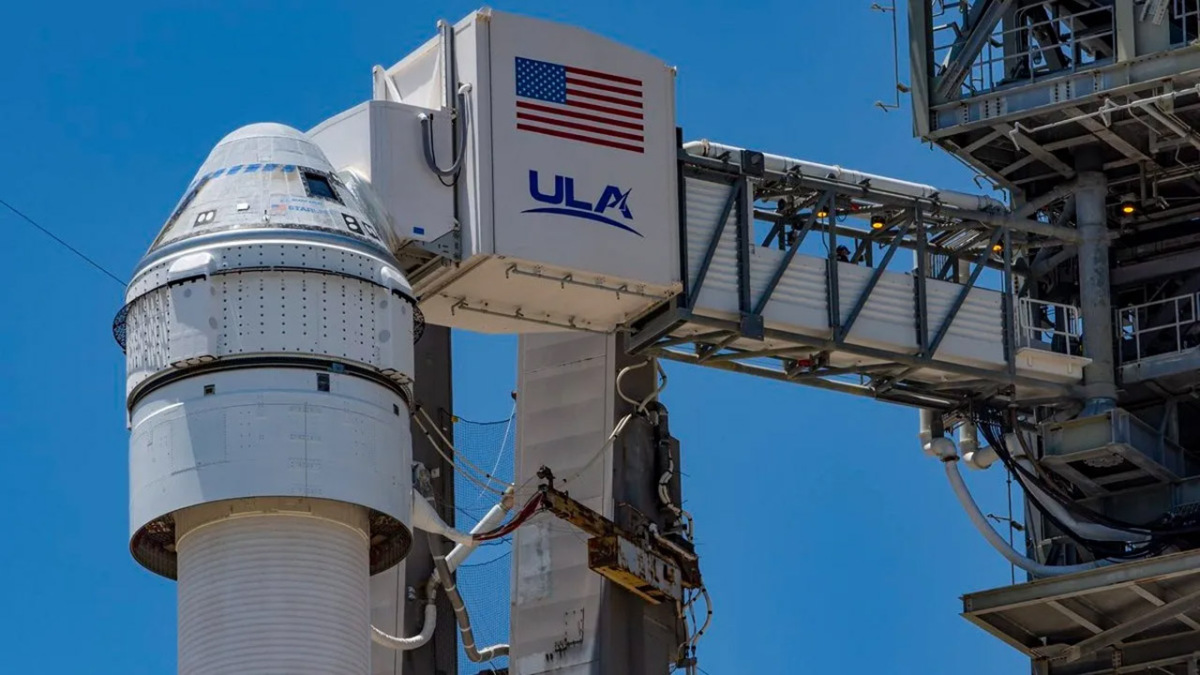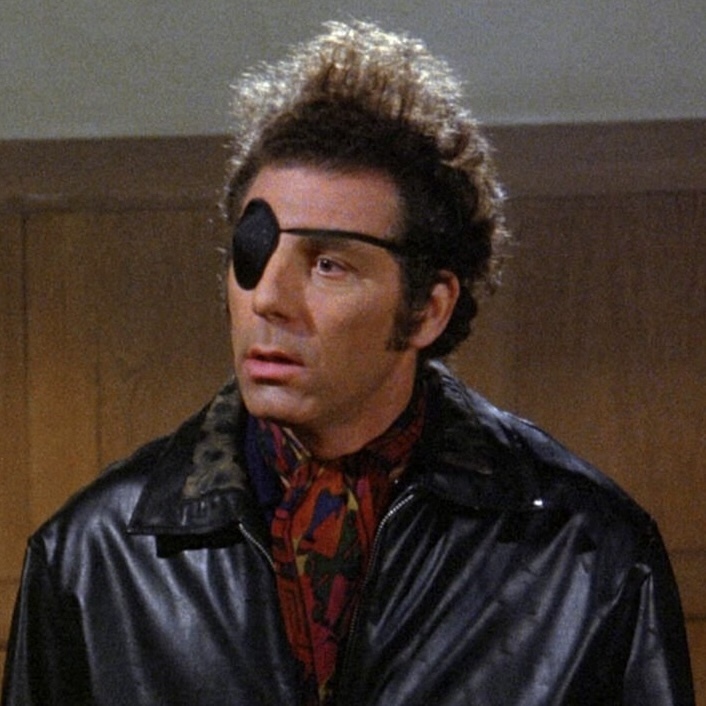Boeing and NASA are moving ahead with the upcoming Starliner demonstration launch despite an active helium leak. The launch is now on the books for Saturday, June 1, at 12:25 p.m. EDT. If all goes as planned, Starliner will rendezvous with the International Space Station the following day and return to Earth on June 10. If not, it will be another embarrassing setback for Boeing’s troubled spacecraft.
Technicians discovered helium escaping from the fuel system earlier this month after valve issues caused NASA to halt the last launch attempt. NASA said in a recent news conference that the extremely slow leak does not pose a danger to the spacecraft. This is based on an exhaustive inspection of Starliner, which was removed from the launchpad along with the Atlas V so the valve in ULA’s rocket could be swapped. It was then that the team noticed the helium leak in Starliner.
Even though the optics of launching with an active leak aren’t ideal for the troubled Boeing craft, NASA says engineers have done their due diligence during this multi-week pause. Every space launch has risk tolerances, and NASA has judged this one to be in bounds. Helium is a tiny atom that is difficult to fully contain—even the highly successful SpaceX Dragon has occasionally flown with small leaks. While helium is part of the propulsion system, this inert gas is not used as fuel. Helium is used to pressurize the system and ensure fuel is available to the spacecraft’s four “doghouse” thruster assemblies and the launch abort engines.
Launch was cancelled minutes before go.
They really should make the Boeing executives be the first astronauts on this mission.
Nah, you have to have actual skills to be an astronaut.
They must have some skills if they rose to the level of Boeing executive, right? They wouldn’t put a bunch of useless MBAs who don’t care about safety in charge of a critical aerospace company.
Laika’s greatest skill was being a good girl. While I don’t think Boeing exec’s can compete with that, I think they’ve got enough skills to staff the launch vehicle if Laika could do it.
They’ve launched dogs, monkeys, and whatnot before.
Sure, those were still way more skilled than Boeing executives, but there’s also uncrewed launches, so that’s no excuse.
Call them payload or cargo or ballast instead of astronauts if you want, what counts is launching the fuckers into space and (hopefully) not bringing them back.
Do you?
I think ShittyBeattlesFCPres is onto something. Let’s find that out.
I agree 💯
I hear Pluto’s nice at this time of year.
Given the ballooning costs of the program, a helium leak is fitting.
Sigh…
👏
I hate that the joke hits, just as the shit does the fan at Boeing.
Careful… that kind of talk could lead to your very convenient “suicide”…
Mostly surprising they thought it was leaking hard enough to lift off.
Mission Control : “You are clear to launch.”
Astronaut (in comically high pitched voice) : “Um, are you sure the leak is contained?”
Mission Control (stifling giggles): “Oh for sure.”
At that precise moment the door to the astronauts cockpit falls off onto the launch pad.
Boeing logo prominently displayed
Have they considered submerging the spacecraft, to see where the bubbles come out? 🙃
That’s non-sense and too expensive. Just add soapy water to a few spay bottles, that should do the trick.
The helium makes it float, so they got a guy to rub his spit on the rocket using his finger, but that process takes a long time so we’re just refilling the rocket in the meantime until we find it.
The last guy who submerged Boeing parts didn’t end up too well.
I’ve done it. It’s not as fun as you’d think.
I don’t trust Boeing with airplanes anymore. What makes you think I trust them with spacecraft of any kind?
Because this isn’t launching from a Boeing factory. NASA goes over it with a fine tooth comb first.
I trust NASA but despite that I still don’t trust that it was Boeing who were involved.
I trust NASA
They’ve killed 21 astronauts so far (not counting X-15 pilots), most of them through criminal negligence…
As opposed to any other companies? I don’t have the data, but I have a hunch that if you can find every OSHA violation that ended up in death, NASA would be pretty low on that list. Even if you factor in the hours worked.
None of us are sitting in it’d cock pit. Anyway, how many pits does a cock have anyway?
I would say two. Right under the wings.
What about front and back of the balls,?
Those are ballpits, not cockpits
Okay… moving on.
Removed by mod
I distinctly remember growing up hearing there’s not even a .01% margin for error on spacecraft. That they must be so durable to withstand the conditions of leaving/reentry and the shuddering vibrations. I realize it’s different, but the big fear is always having another Challenger. Challenger didn’t just break up, it exploded into 2 pieces on national television. " teacher going to space" had a TV in every classroom across the country watching it.
Helium seems used in the modern rocket to keep hot gas pipes separate from cold liquid fuel. 3 minutes before launch the system is charged and maintained by ground, just before ignition it’s disengaged and the system has to support itself. The helium on board only needs to stay pressurized for the 7 minutes or so it takes before the thrusters are spent, and purged, and that’s why they don’t view it as an issue. But still sounds like fuckass Boeing being ok gambling with lives while NASA shrugs - again.
deleted by creator
Didn’t mean to be so incorrect (off by 23 years) there was some kind of accolade for her, maybe it was just being a teacher? I’ll fix the post tho
First civilian
In 1984, President Ronald Reagan announced the Teacher in Space Project, and McAuliffe learned about NASA’s efforts to find their first civilian, an educator, to fly into space.[20] NASA wanted to find an “ordinary person,” a gifted teacher who could communicate with students while in orbit.[6][15] McAuliffe became one of more than 11,000 applicants.[ https://en.wikipedia.org/wiki/Christa_McAuliffe
Removed by mod
The way that the NASA program worked was that failure was expected and redundancies were added where they could. NASA program engineers knew that any failure could be a PR nightmare and would result in their funding being cut.
Their margin for error was small but because error-handling was built into the system.
If only that philosophy existed today.
NASA landed on the moon with 1960’s technology, not because it was easy in the 60’s, but because every single aspect of the mission was planned, tested, rehearsed, and made as simple as possible where it couldn’t have a redundancy. The only time something went really wrong was when a faulty tank exploded on Apollo 13, but due to having an entirely separate craft in the form of the lander attached, the astronauts were able to ride out the failure all the way around the moon and back to earth. Oh yeah, even the orbit they picked would let the whole spacecraft fly around the moon and come back to earth without having to do any engine burns.
Look at planned missions today. Launch the Human Landing system. Have it sit in space for an unknown amount of time while anywhere from 6 to 12 refueling rockets are launched to refuel the lander. Relight lander engines in earth orbit, go to moon, relight engines again to orbit the moon. Launch the Orion spacecraft with crew on board, this also must burns its engines once at the moon to enter lunar orbit. Rendezvous and dock with the HLS, transfer crew and supplies over. Undock Orion, relight HLS engines for a 4th time to deorbit and land HLS. Use an elevator to get from HLS to the lunar surface for the next week or so. Board the HLS, which needed at least 6 refueling tankers full of cryogenic fuel to get to the moon and has now been sitting on the 200 degree lunar surface for a week, and light the engines a 5th time to take off and enter lunar orbit. Rendezvous with Orion, and return home. NASA has demonstrated that Orion can do the mission. But HLS has not even shown the technical capability of doing this. Its engines have never been relit in space, it has never sat in space for a week to see what happens to the engines. The entire interior isn’t even built yet and NASA is just using a 9 meter steel circle to train astronauts on the airlock section because no one knows what it will look like.
This mission couldn’t be more complicated if you tried. Apollo needed a total of 1 engine relight on the transfer stage, and 2 engine relights on the command module: one to enter lunar orbit, and one to leave and return to earth. The lander used pressure fed engines that only needed to work once each. One engine got them from orbit to the surface, one got them from the surface to orbit. If the Ascent engine didn’t work, NASA had plans for everything from literally jump starting it with the descent module’s batteries like it’s a dead car, to having an astronaut use bolt cutters to cut the safety pins on the engine so the valves can be manually opened.
If your car doesn’t start in the morning, you might call off work and get it towed to a mechanic. What do you do when you’re trying to leave the moon, and your rocket engines won’t light because they’ve been sitting in space for almost 2 weeks? The nearest rocket engineer is 240,000 miles away back on earth, and so are all the spare parts. And what do you do if only some of those engines light, and the others either don’t or explode while you’re on a suborbital trajectory. Complexity kills on harsh environments. Space is one of the harshest environment we’ve ever been in, so things need to be as simple as possible and known to work.
The philosophy still exists today at NASA proper.
Blue Origin and SpaceX don’t need to have that philosophy. Because their owners are having a dick measuring contest and have literal billions to literally burn.
The budget constraints on NASA during the Apollo missions made success a requirement. They couldn’t afford to waste money or even look like they are wasting money. Even early tests where NASA rockets were burning and exploding they had to justify to Congress that they were learning.
It helped that the “red scare” kept the public interested in space exploration because it was about beating the Soviet Union.
But when Blue Origin and SpaceX have to answer to just a billionaire, they can get away with failure after failure. It’s probably cheaper for them.
If it really did, then nasa would not have committed to this hare brained scheme of musk’s.
The fact that the SpaceX proposal was accepted by an interim director who then went to work at SpaceX 6 months later, and no one has investigated this or challenged the acceptance of this contract tells me that safety is clearly not the priority. If safety was the priority, the new director would have looked at the current proposal and demanded a renegotiation or reconsideration.
I think you are forgetting about Apollo 1 in the list of times when things went wrong during the Apollo era.
The day the Challenger blew up was the day I stopped wanting to be an astronaut when I grew up.
I can just imagine you sitting there with a little astronaut helmet on, eating astronaut ice cream, and drinking Tang while watching the Challenger go up. Just slowly taking off your helmet, pouring out your tang, and chunking the astronaut ice cream in the dumpster. Then little InternetUser2012 just kind of saying to themself, “Yeah I don’t know what I was thinking. That shit is WAY more dangerous than I thought!”
In fairness, just reading about the Challenger also made me do about the same thing when I was a kid. I thought going to space was about the coolest thing I could think of to do. Then when I was in the like the 3rd or 4th grade I read about the Challenger and was like, “On second thought, I don’t think I want to go to space after all.”
Reality sets in and you realize how crazy and insane of a job it actually is. Incredible no doubt for the many who do so safetly but yeah… not exactly safe.
Challenger’s hardware was flown in out of spec conditions.
Here is an alternative Piped link(s):
Piped is a privacy-respecting open-source alternative frontend to YouTube.
I’m open-source; check me out at GitHub.
Removed by mod
Boing: Fuck it! We’ll do it live!
Boeing just doesn’t know what that is. They’ve never seen a leak. What does that even mean “to vent us out?”
deleted by creator
Sounds pretty on-brand.
“We fly with worse problems all the time.”. NASA: "Oh ok, you’re clear to launch. "
Spoilers: They didn’t.
It’s simultaneously hilarious and deeply depressing to see how far Boeing has fallen in the last few decades.
Morton Thiokol has entered the chat
Morton Thiokol
you mean Allan McDonald?
Interestingly enough:
The focus of the commission’s investigation shifted to the booster rocket O-rings, and the concerns and efforts of McDonald and his engineers to stop the launch which were ignored by NASA officials. McDonald’s comments to the commission led to him temporarily losing his position with Morton Thiokol, being demoted.
The presidential commission was alarmed at Morton Thiokol’s decision to punish McDonald and introduced a joint resolution that threatened to prevent Morton Thiokol from receiving further contracts from NASA. Given the commission’s threat, Morton Thiokol promoted McDonald to vice president and tasked him with improving the rocket joints that failed during Challenger’s launch.
Perhaps the U.S. govt needs to step in again to right the ship at boeing. Well, I’m being coy, of course the U.S. gov’t has to step up and do something. Companies should never be some sacred cow that we’re afraid of upsetting.
I’d step back at that launch




















